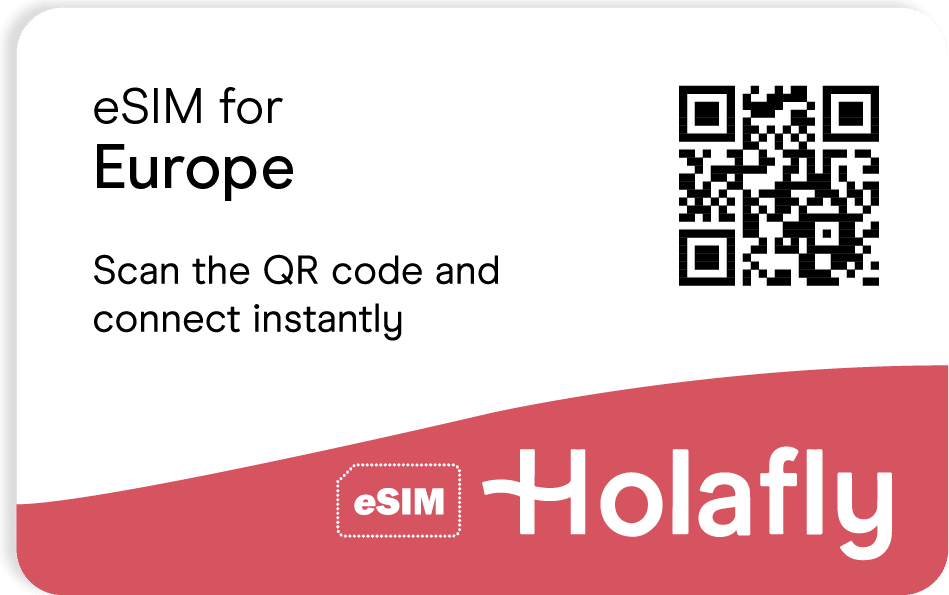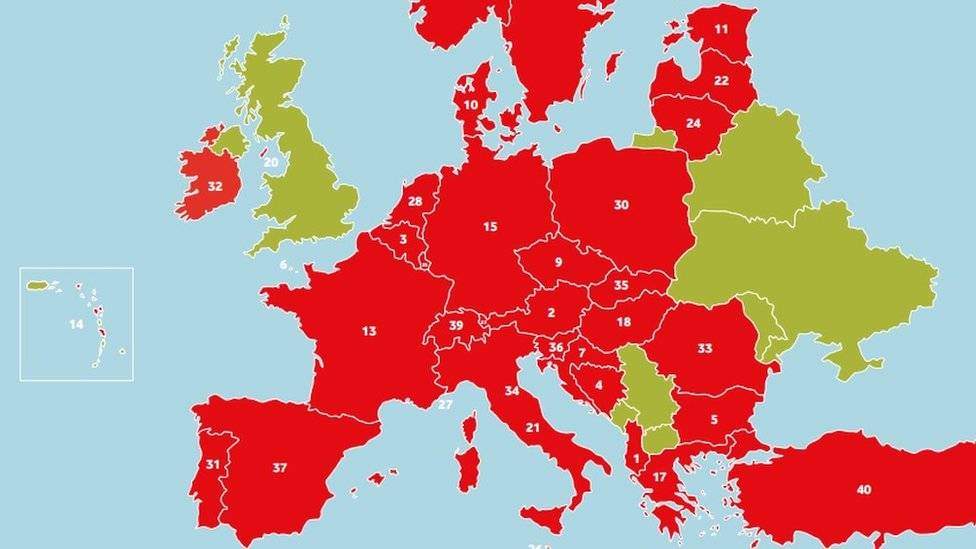Internet
Pocket WiFi at Rome Airport: prices, providers, and how to rent
Want to use a Pocket WiFi at the Rome Airport? Get to know all about the available options and how you can rent one!

Table of Contents
We all know Europe is one of the most visited continents in the world. People know there are many places to visit that will surely take their breath away. And, there’s also the important history behind these places. But, how’s Mobile Internet in Europe working? Is it good, or should people be worried?
In case you are having some doubts about data connectivity quality in Europe, you came to the right place. Today we will be talking about different things that will surely matter. So, pay attention if you intend to travel any time soon and you want to use your cell phone in Europe.

Europe is one of the most advanced continents, technologically speaking. People can find Pocket WiFi devices there, they can use SIM and eSIM cards, and even use roaming services if needed. So, there’s no need to worry about how to stay connected there, to be honest.
But if there’s a question people have on their minds it’s: which one of these options we just mentioned is the best for people to use? Well, that’s something we will talk about right now. That way people won’t be having hard times choosing what service to use.
For most people out there, the budget of how much they can spend is the most important thing to consider. That way, people can actually make plans to see what they can buy or how they can spend their money. Therefore, we have prepared a small table comparing the prices of the different services offered there.
| Service | Internet rates in Europe |
| SIM Card Europe | 39 to 49 USD (8 to 12GB of data included) |
| eSIM Card Europe | 19 to 99 USD (Unlimited data) |
| T-Mobile Roaming | 30 to 47 USD depending on the chosen plan |
| Vodafone Roaming | Free or 6 USD outside the European Zone |
| Telstra Roaming | 10 USD per day with the Traveling Pass |
| Pocket WiFi | 40 to 103.94 USD |
| Public WiFi | Free |
One of the alternatives we mentioned was the Europe SIM cards. We know most people have used one in the past, and now they can be used when traveling around the world. This has made SIM cards a viable option for people to consider instead of other alternatives.
And, in case you want to take one with you, we highly recommend checking with local providers or international providers. Some local providers are Vodafone, Orange, Three, Telefonica and many more.
Clearly, each country has different providers and some providers operate in several European countries, so those are details you have to keep in mind.
In case you have the chance to use an International eSIM, we highly recommend people to take them when traveling. These digital SIM cards are pretty easy to buy and will work alongside the SIM card most people have on their phones.
eSIMs have a great coverage range and incredible prices! This makes them pretty accessible for most people.
Once more, if you want to visit Europe and stay connected, the Holafly eSIM for Europe is surely one of the best options to consider. Additionally, you’ll receive a total of 120 minutes of talk time and an Austrian (+43) phone number. Remember to check the T&Cs!
For those wondering if someone can get International internet with their domestic mobile operator while being in Europe, the answer is yes. People can activate the roaming service as long as it is available, which is a great way to stay connected.
The only downside we have heard is the price to pay. Roaming in Europe tends to be quite expensive, which is why most people try to find a different alternative, but still, let’s see what we can find.
Something that is pretty interesting is that most countries in Europe are offering roaming services from T-Mobile. Therefore, by paying for their local plan, people can eventually use the roaming service when needed.
All these plans offer people access to their home plan, and if someone uses up all the Mobiledata they receive, then there’s an option to pay to get more Mobile data.
Now, talking about Vodafone. Actually, Vodafone is present in most parts of Europe. This is something truly excellent for people as they can access free-roaming services as long as they are located inside the EU.
For locations outside the EU, the roaming service is still available. But, in this case, people will have to pay $6 to access the service.
For Telstra users, they have a decent roaming service. Telstra offers a Traveling Pass that is available in most of the European countries, and it costs $10 per day to use the service.
And, there’s another option for people to use, which is the pay-as-you-go plan, costing $3 per MB consumed.
Another option for people to use is Pocket WiFi for Europe. These devices have been in the market for quite some time, which is why in the past, this was one of the most used alternatives for travelers.
But, there are some things people must know first. Prices are not so accessible in some cases, there are some penalties for those who lose or damage a device, and they offer a small amount of Mobile data per week.
My Webspot is one of the alternatives people can use while traveling to Europe. They offer a plan with 1 GB of Mobile data per day, and prices are around $7 per day. For a whole week, prices tend to be around 65 to 85 USD depending on where people are traveling to.
As we mentioned before, there is a penalty people must consider when renting a device. In this particular case, the company can charge 102 to 204 USD to people who lose or damage the rented device.
Another company that people can consider when using Pocket WiFi is Travelers WiFi. This company is located in Switzerland and the service is available in most countries around the world.
The only thing to consider here is the fact that they will only have access to 1 GB of Mobile data per day, and the prices are around 65 to 85 USD depending on where they are traveling to. And, there’s also a penalty for those who lose or damage a device and the price to pay is $159.
Europe is one of the continents where people can find free WiFi hotspots in many places. Whether it is a restaurant, a museum, a hotel, and more, there will surely be a free WiFi hotspot for people to use.
But, there’s a small detail here for people to consider. These WiFi hotspots won’t be always available. Therefore, people should have other alternatives for them to use whenever the hotspot is down, such as SIM or eSIM cards.


Wondering which alternative we recommend for people to use? This is a great question as there are numerous options out there. But, nowadays, we consider two of them as the main alternatives for people who want to save money while traveling.
We are talking about the SIM and eSIM cards, and to be more specific, the eSIM and SIM cards from Holafly because they’re the best options on the market, people won’t surely regret using them!
In case you have some questions left about the alternatives we mentioned, here will give you some extra answers.
Most networks in Europe operate on 800, 850, 900, 1800, 1900.
Europe is one of the continents with the best cellphone networks around the world. People can find are 2G, 3G, 4G, and even 5G networks to use.
In Europe, there are lots of telephone companies to use. Vodafone, Three, O2, EE, and SFR are only a few to mention.
Internet
Pocket WiFi at Rome Airport: prices, providers, and how to rent
Want to use a Pocket WiFi at the Rome Airport? Get to know all about the available options and how you can rent one!
Internet
Pocket WiFi at Paris Airport: prices, providers, and how to rent
It doesn't have to be challenging to have your pocket WiFi at Paris Airport. Learn with us how to get it, use it, and data plan prices.
Internet
Pocket WiFi at Incheon Airport: prices, providers, and how to rent
Learn how to get your pocket WiFi at Incheon Airport quickly. Also, discover their prices, plans, how to use and other alternatives.
Internet
Pocket WiFi at Haneda Airport: prices, providers, and how to rent
Do you need a Pocket WiFi for the Haneda Airport? Get to know the available options and find the one that suits you better!